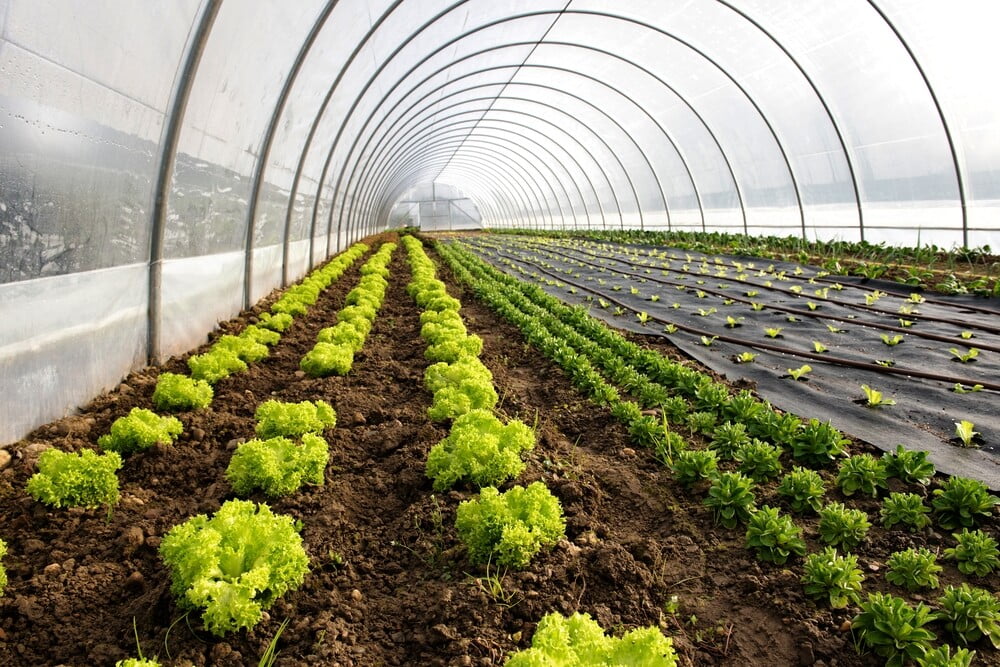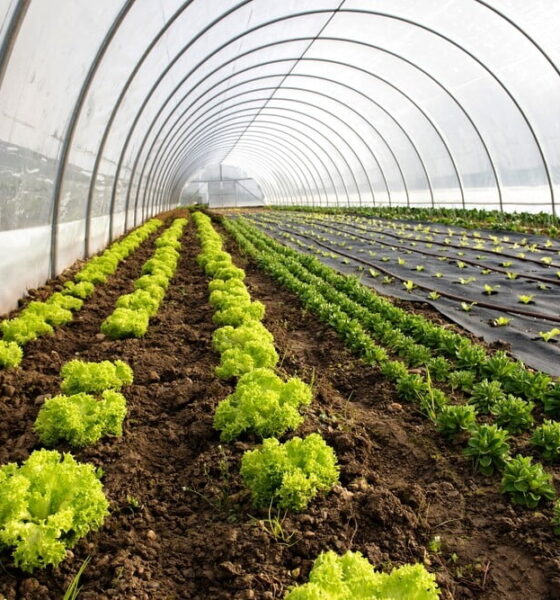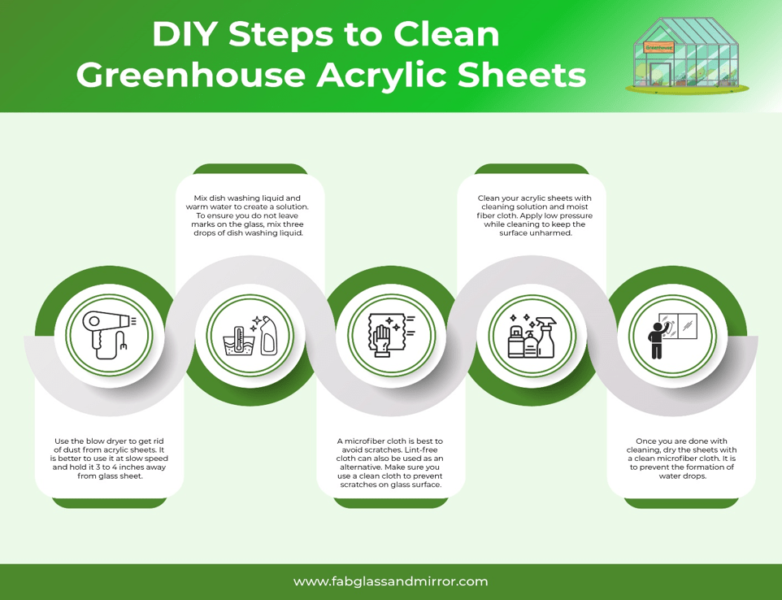

Editors Choice
How To Clean And Maintain Greenhouse Acrylic Sheets For Lasting Use
Conventional greenhouses are built with glass, but using glass for a greenhouse comes with some drawbacks. Glass is heavy and requires better frame construction.
Glass can get broken easily and is a costly risk in a garden where children play freely. It requires strong foundations to support its weight, and the initial cost of installation is expensive.
The acrylic sheet is an alternative to glass. Using it for your greenhouse provides you with lots of advantages. They are:
- Just as transparent as optical glass.
- Lightweight compared to glass, much heavy.
- Durable and suitable in all weather. It is also resistant to Ultraviolet rays and has excellent UV stability.
- Having higher impact resistance compared to glass.
- Also resistant to hydrofluoric acid (HF)
- It is easy to work with and can be made into different shapes and sizes.
Why Is It Necessary to Keep Acrylic Glass Windows Clean?
Acrylic is a safer and durable alternative to glass, but it is essential to keep it clean to make it last. Knowing how to clean and maintain acrylic panels is vital to make it last longer.
Additionally, when acrylic sheets are not properly cleaned and maintained, its appearance becomes dull and unattractive. To keep it looking shiny and polished, you need to clean it and maintain frequently.
Another reason to keep acrylic glass windows clean is to prevent scratches. When you leave it alone without proper maintenance, it becomes susceptible to scratches. Adequate cleaning ensures the acrylic sheet is free from dirt and scratches.
Besides the above, keeping acrylic greenhouse sheets clean will help your plants get more sunlight. A dirty acrylic sheet surface can prevent light from getting to your plants, but keeping it clean means, your plants will be getting all the light they need.
Cleaning of acrylic should be carried out carefully because the sheeting can be damaged if you use harsh solvents and cleaners.
Tools and Materials Required to Clean Acrylic Sheets.
For Basic Acrylic Cleaning:
You will need a:
- Blow dryer
- Dishwashing liquid
- Warm water
- Microfiber cloth
For Cleaning and Getting Rid of Blemishes
To get rid of blemishes and scratches, you will need:
- Soft microfiber cloth
- Mild alcohol
- Kerosene
- Wax
- Sandpaper
DIY Steps to Clean Greenhouse Acrylic Sheets

HOW TO CLEAN ACRYLIC:
To give your greenhouse acrylic sheet an essential cleaning, start by:
1. Get rid of dust
Use the blow dryer to get rid of dust and dirt build-up from acrylic sheets. Please set it to the lowest speed and hold it away from the window at about three to four inches. Cover the acrylic surface equally from one side to the other. You may want to use an add-on cord so that you can cover the sheets equally with the blow dryer.
2. Cleaning Solution
Mix dishwashing liquid with warm water to create a cleaning solution. To ensure you do not leave streaks on the glass, mix a gallon of water with three drops of dishwashing liquid. You can either pour into spray bottles or use them directly from the bucket for immediate cleaning.
3. Use Micro-Fiber Cloth
A microfiber cloth is the best to avoid scratches. If you do not have one, you can make use of a lint-free, soft cloth that is not abrasive. You can directly wet the fabric by putting in the cleaning solution or moisten it with the spray bottle.
Make sure to use a new and clean cloth or microfiber cloth to clean acrylic windows. Dirt or debris residue from the previous cleaning, when you are reusing a cleaning cloth, can scratch your acrylic sheets easily.
4. Clean the Acrylic Surface
You’ve blown dust and dirt, have mixed your cleaning solution, and have your cleaning cloth handy. Now, all you need to do is clean your acrylic sheets with the moist microfiber cloth, making sure to wet where and when necessary.
Apply low pressure while cleaning and dab the acrylic surface gently to prevent scratches. Dirt and debris do not cling to acrylic sheets, and a simple cleaning should get rid of dirt and residue from your acrylic greenhouse.
5. Dry The Sheets
Once you are done with cleaning using a moist cloth, dry the sheets with a clean and dry microfiber cloth. It is to prevent the formation of water spots. Use short circular motions instead as wiping down the surface can cause scratches.
Cleaning And Getting Rid Of Blemishes
1. Clean Fingerprints with Mild Alcohol
To get rid of fingerprints on your acrylic sheet, moisten a soft cloth with a mild or you can use isopropyl alcohol. Wipe it over areas where there are fingerprints on your acrylic sheets. Once you can no longer see the prints, use a clean and moist cloth to get rid of the alcohol quickly. Mild alcohol should only be used for this purpose and not for regular acrylic sheet cleaning.
2. Remove Difficult Stains
To get rid of hard stains like tar, grease, or oil from your acrylic greenhouse, get a small quantity of kerosene. Moisten a soft cloth with kerosene. Pass the moist cloth over the acrylic stained surface as gentle as possible to prevent scratches.
Once the stains are gone, clean the area immediately with a separate wet and clean cloth to remove traces of the kerosene.
3. Get Rid of Abrasions and Scratches.
You can get rid of minute scratches and abrasions on the surface of your greenhouse acrylic sheet. To do this, you can either use car wax, floor wax, or car polish.
Using a microfiber or soft clean cloth, apply a light layer of wax evenly to your acrylic sheet surface. Using another clean and moist cloth, rub the wax gently on the surface to get rid of scratches and abrasions.
How To Prevent Damaging Your Greenhouse Acrylic Sheets While Cleaning
To prevent your acrylic sheets from getting damaged during cleaning, take note of the following:
- Avoid using cleaners with ammonia as the base ingredient on your acrylic sheet.
- Do not use cleaning solutions with vinegar, as this is acidic and will damage the acrylic.
- Do not use commercial window cleaners except where it is stated as non-abrasive or recommended for acrylic specifically.
- Avoid the use of scrub pads, paper towels, and other tools that are abrasive. A soft clean cloth or microfiber cloth is enough, and these will not damage the surface.


 Environment9 months ago
Environment9 months agoAre Polymer Banknotes: an Eco-Friendly Trend or a Groundswell?

 Environment11 months ago
Environment11 months agoEco-Friendly Home Improvements: Top 7 Upgrades for 2025

 Features8 months ago
Features8 months agoEco-Friendly Cryptocurrencies: Sustainable Investment Choices

 Features9 months ago
Features9 months agoEco-Friendly Crypto Traders Must Find the Right Exchange





























